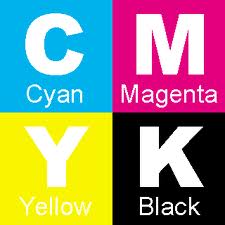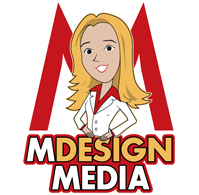 What’s with the numbers? What does it all mean?
What’s with the numbers? What does it all mean?
These numbers tell you how many colors are on each side of a print piece you have done. For example, if you want a full-color printing job done, you’re going to use black (K, or “keyline” color), yellow (Y), magenta (M) and cyan (C; cyan is a type of blue). So full-color printing is represented by the initials CMYK.
Colors are vital to printing. Check out MDesign Media’s Color Psychology: What You Should Know, to find the benefits of different colors for graphic design.
Now, if you’re going to have a full-color piece done, you’ll denote this by using the number “4.” If you’re just going to do black and white, the print job is a “1.” If you want no printing on one side of your document, you’ll say, “0.” So the denotation “4/4” means you want full color printing on both sides of the paper, “4/0” means full color on one side, blank on the other, and “4/1” means full color on the front and black and white on the back.
About CMYK, Known As Four-Color Printing
The four-color print process explained previously (CMYK) uses the four primary colors of cyan, magenta, yellow and black to produce all the colors you see in normal print magazines and books. In some cases, six colors are used, but these are much less common; most printing is produced with the four-color technique.
In fact, most commercial printers use the CMYK method to print full-color. In addition, they can do something called “spot varnish,” and then use “spot color” besides, or separate spots of colors beyond that included in the main printed piece. This can make a four-color print job become a six color print job. That is because six colors of ink will be used for the finished product.
RGB Printing
If you’re viewing something on your computer, you’re seeing what’s on your monitor in what is called “RGB” color. The colors on your computer screen are designated within three regions: green, red and blue. All of these regions produce the colors you see on your computer screen. Hue, color situation, and other factors also determine the various “flavors” of the colors that RGB can produce.
Each RGB color is given a number from 1 to 255. If the printing project is done on your computer, one of the tasks that the printer is going to do is to “translate” RGB colors into CMYK format. To do this, the primary colors (CYM) are taken and mixed to varying degrees with the “K” or keyline color, black. This gives you the finished multi-hued result produced in the printing process.
Differences In Cost
CMYK printing is very standard across the industry. Therefore, its cost is similar to black-and-white. As these types of things become more common and technology improves, costs tend to go down. Because grayscale or black-and-white printing does just use black for printing, this should cost you somewhat less than full-color printing; however, again, because the CMYK method is pretty cost-effective, check around. You may be able to get full-color printing for relatively little more than you will for black-and-white.
That said, of course, there’s something to be said for the elegance of simple black-and-white in some cases. If that’s you, go for black-and-white or grayscale printing. If not, though, CMYK printing is generally a good deal.
Learn more by reading the Los Angeles Times’ Giving Color Printers an Improved Image.
